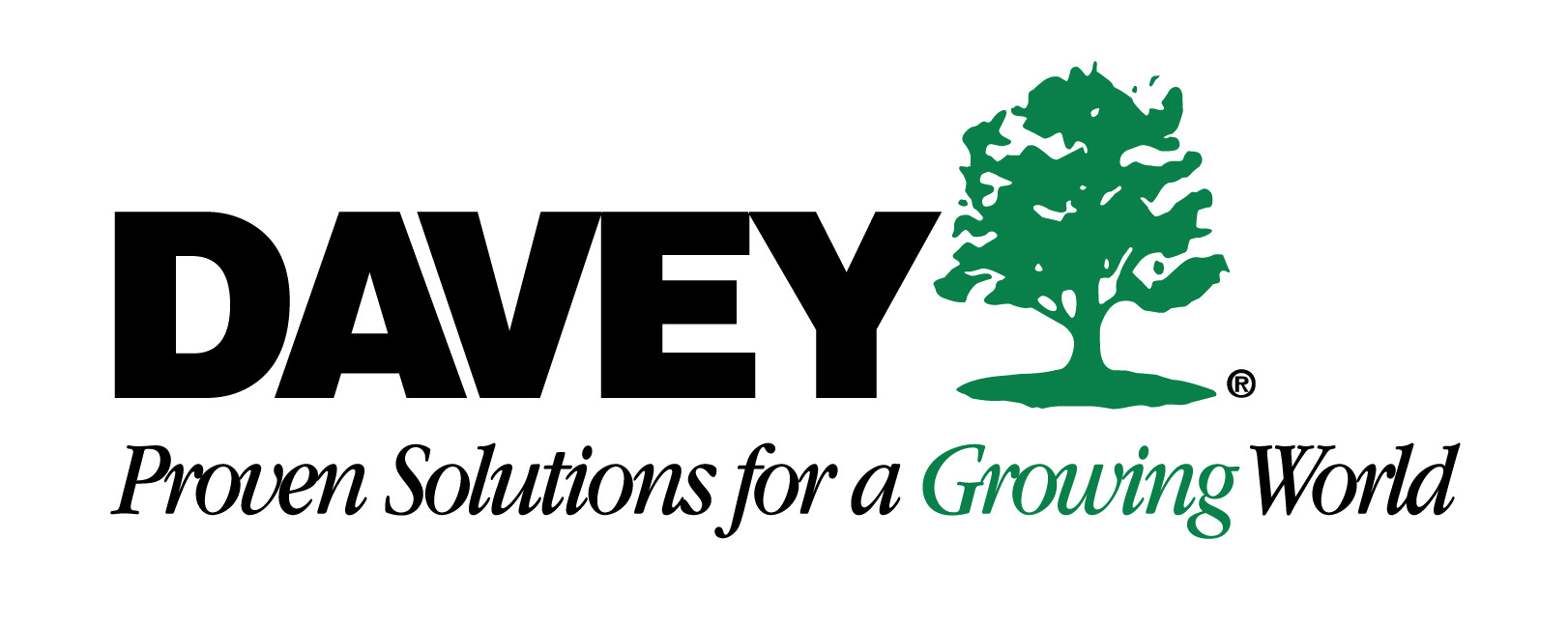Contract Management Software: Concord
Centralize, automate, and finalize every contract faster — so your team can start saving time immediately.
- Reduce time-to-signature by 40% through online negotiations
- Automate tracking and reminders, never miss a deadline
- Securely centralize all agreements, instantly accessible
“Concord is my one-stop shop for the entire contract lifecycle. It's Google docs, Microsoft Word, DocuSign and a File explorer, all in one.”

Hannah L., ⭐⭐⭐⭐⭐
Book a demo
Try an interactive demo of Concord’s contract management software
Last Updated: June 2025 – This guide reflects the latest developments in contract management software.
Table of Contents
What is contract management software?
Contract management software (also known as contract lifecycle management or CLM software) is a unified digital system that centralizes, automates, and tracks every stage of a contract — from intake, drafting, and negotiation to execution, obligation management, and renewal or termination.
Contract management market statistics
- $1.07 billion – Global CLM market value in 2024
- $3.46 billion – Projected market value by 2034
- 12.4% – Annual growth rate (CAGR)
- 9% – Average revenue lost to poor contract management
- 356% – Typical ROI over three years
- 20,000-40,000 – Active contracts managed by Fortune 1000 companies
Real-world impact: Case studies in contract management software
Case Study: Standardized Workflows Save Time and Money at Yates Construction

Key Benefits:
- • Centralized repository
- • Automated workflows
- • Version control
With 5,000 employees across 15 divisions, Yates Construction struggled with decentralized contract processes that created delays and compliance risks.
How Concord helped:
- • Concord unified all 15 divisions on one platform
- • Automated sending replaced manual email chains
- • Clear audit trails prevent unauthorized edits
“A lot of subcontractors refuse to go to work until they have a signed contract, so Concord gets our projects moving much faster. It provides tools that enable you to use it the way you need to.” — Jenny McMullen, Corporate Contract Administrator
Case Study: AI-Powered Contracts Accelerate Sales at PAAY

Key Benefits:
- • Automated PDF data extraction
- • HubSpot integration
- • Built-in redlining
PAAY’s manual contracting processes created sales bottlenecks. Their legacy system couldn’t scale with growth, delaying deal closures.
How Concord helped:
- • Concord’s AI extracts data from any document format
- • Direct HubSpot sync eliminates manual entry
- • Mobile redlining enables deals anywhere
“There’s no other contract platform that delivers this much value at this price point. Concord has just been great for us.” — Melissa Hyde, Senior Sales Operations Analyst
Key definitions for contract management software
| Term | Definition |
|---|---|
| Contract Management Software | Digital platform that centralizes and automates the entire contract lifecycle |
| CLM | Contract Lifecycle Management – the complete process of managing contracts from creation to renewal |
| Agreement Intelligence | AI-powered analysis that extracts insights and data from contracts |
Beyond basic document management: the evolution of CLM
The contemporary understanding of contract lifecycle management extends far beyond basic document storage and retrieval. Today’s CLM encompasses a comprehensive framework that addresses all aspects of the contract journey:
- Request and authoring: Streamlining contract creation through templates, clause libraries, and automated drafting tools
- Negotiation and approval: Facilitating collaborative redlining, version control, and approval workflows
- Execution: Enabling secure electronic signatures and maintaining audit trails
- Storage and organization: Centralizing contract repositories with robust search and classification capabilities
- Obligation management: Tracking commitments, deadlines, and performance metrics
- Compliance monitoring: Ensuring adherence to regulatory requirements and internal policies
- Analysis and reporting: Extracting actionable insights from contract data to inform business decisions
- Renewal and termination: Managing contract end-of-life processes effectively
This evolution represents a fundamental shift in how organizations perceive contracts—no longer as static legal documents but as dynamic data assets that can drive significant business value.
The high cost of ineffective contract management
The financial implications of poor contract management are staggering. According to World Commerce & Contracting research, ineffective contract management costs organizations approximately 9% of their annual revenue. This substantial leakage occurs through various channels:
- Missed renewal opportunities
- Unfavorable auto-renewals
- Failure to enforce contract terms
- Compliance violations resulting in penalties
- Inefficient processes consuming valuable staff time
- Inability to leverage negotiated discounts and rebates
For a mid-sized company with $100 million in annual revenue, this represents $9 million in potential lost value—a figure that should command attention at the highest levels of the organization.
Beyond direct financial impacts, ineffective contract management creates significant operational risks:
- Service disruptions due to expired agreements
- Intellectual property vulnerabilities
- Data security and privacy exposures
- Reputation damage from compliance failures
- Impaired business relationships due to contractual disputes
These factors contribute to the growing recognition that contract management deserves strategic attention, not merely administrative handling.
The transformative potential of modern CLM solutions
Modern CLM platforms offer transformative capabilities that extend far beyond traditional contract management approaches:
AI-powered insights and automation
Artificial intelligence and machine learning technologies are revolutionizing how organizations interact with their contracts. Advanced CLM solutions can:
- Automatically extract key terms and obligations from contracts
- Identify potential risks and opportunities within agreement language
- Streamline review processes through pattern recognition
- Generate insights from contract data to inform business decisions
According to research by Zycus, AI integration has become one of the most significant trends in the CLM landscape. AI capabilities can reduce manual labor in contract review processes by as much as 50% while improving accuracy and consistency.
Data-driven decision making
By centralizing contract data and making it accessible for analysis, modern CLM solutions enable organizations to:
- Benchmark contract terms across vendors and customers
- Identify opportunities for consolidation and cost savings
- Forecast renewal dates and budget implications
- Analyze contract performance against expected outcomes
This data-driven approach transforms contracts from static documents into strategic information sources that can guide procurement, sales, and financial planning decisions.
Cross-functional collaboration
The evolution of CLM extends beyond legal departments. Today, 75% of organizations recognize the importance of connecting contract management with other business systems. Modern platforms facilitate collaboration across departments by:
- Integrating with CRM, ERP, and procurement systems
- Creating transparent workflows that span functional boundaries
- Providing role-based access appropriate to different stakeholders
- Enabling collaborative negotiation and approval processes
This cross-functional approach ensures that contracts serve organizational goals holistically rather than existing in legal isolation.
Real-world impact: the Pima Community College case study
The transformative potential of modern CLM is clearly illustrated by Pima Community College’s experience implementing Concord’s CLM solution. Like many educational institutions, PCC relies heavily on grants and contracts—representing approximately 20% of its annual operating budget—to fund vital programs and support students.
Prior to implementing a centralized CLM system, PCC struggled with fragmented communication, limited visibility into contract status, and inefficient approval processes. These challenges jeopardized grant opportunities and created administrative burdens.
According to Julie Delayo, Executive Director for Sponsored Programs, Grants and Contracts at PCC, the implementation of Concord’s platform revolutionized their approach: “It gives us the ability to have those discussions right in the discussion tab. And it sends out emails so everybody stays in the loop.”
This centralized approach eliminated the delays and confusion caused by scattered email chains, providing a single source of truth for contract-related communications. The platform’s workflow management capabilities provided real-time visibility into agreement status, enabling proactive management of deadlines and approvals.
Delayo highlighted another key benefit: flexible access controls that balance security with accessibility. “You can give somebody full view who needs access to all contracts,” she noted, “and then you can narrow it down to a department.”
The results were substantial. By streamlining workflows and improving communication, PCC significantly reduced the time required for General Counsel approvals and shortened the overall contract development cycle. This increased agility translated directly into more successful grant applications, representing additional funding for critical student programs.
Key considerations for successful CLM implementation
While the benefits of advanced CLM are compelling, successful implementation requires careful planning and strategic approach. According to Gartner, up to 50% of first-time CLM implementations fail to deliver expected benefits due to unrealistic expectations or inadequate planning.
Organizations considering CLM investments should focus on several critical factors:
1. Establish clear objectives and success metrics
Begin by identifying specific challenges in your current contract management processes and establishing measurable goals for improvement. Common objectives include:
- Reducing contract cycle time
- Improving compliance and risk management
- Enhancing visibility into contract data
- Streamlining approval workflows
- Capturing more value from existing agreements
By establishing concrete metrics—such as percentage reduction in processing time or dollar value of identified savings—organizations can objectively evaluate CLM success.
2. Secure cross-functional buy-in
CLM implementations affect multiple stakeholders across the organization. Successful deployments require buy-in from:
- Legal departments responsible for contract oversight
- Business units that originate and execute agreements
- Finance teams that monitor contractual obligations
- IT departments that support system integration
- Executive sponsors who champion the initiative
Creating a cross-functional implementation team ensures that diverse perspectives and requirements are incorporated into the CLM strategy.
3. Prioritize user experience
Even the most sophisticated CLM solution will fail if users find it difficult or cumbersome. Organizations should:
- Involve end users in the selection process
- Prioritize intuitive interfaces and workflows
- Provide comprehensive training and support
- Gather and incorporate user feedback
- Demonstrate tangible benefits to drive adoption
The most successful implementations focus not just on technical capabilities but on creating a positive user experience that encourages adoption.
4. Plan for integration with existing systems
CLM doesn’t exist in isolation. To maximize value, organizations should plan for integration with:
- CRM systems for customer-related contracts
- ERP platforms for financial and operational data
- Procurement systems for vendor agreements
- E-signature solutions for execution processes
- Document management systems for broader content
These integrations create a unified ecosystem where contract data flows seamlessly between applications, eliminating manual data entry and providing comprehensive visibility.
5. Take a phased implementation approach
Rather than attempting a comprehensive implementation all at once, organizations often benefit from a phased approach:
Phase 1: Quick wins (0-3 months)
- Conduct a contract inventory assessment
- Implement standardized naming conventions and basic organization
- Establish core metrics for tracking progress
Phase 2: Core capabilities (3-9 months)
- Deploy central contract repository
- Implement basic workflow and approval processes
- Enable electronic signature integration
- Provide basic reporting capabilities
Phase 3: Advanced features (9+ months)
- Implement AI-powered data extraction and analysis
- Develop comprehensive dashboards and analytics
- Enable advanced obligation management
- Integrate with broader enterprise systems
This incremental approach delivers value more quickly while allowing for adjustments based on user feedback and organizational learning.
Measuring ROI: quantifying the value of CLM
Establishing a compelling business case for CLM investment requires demonstrating tangible return on investment. According to a Forrester analysis, organizations implementing DocuSign’s CLM solution achieved a 356% ROI over three years, including $4 million in contract processing cost savings.
Several key metrics help quantify CLM’s financial impact:
Direct cost savings
- Reduced staff time for contract creation, review, and management
- Lower legal spend on outside counsel for routine contract matters
- Decreased administrative overhead for contract handling
- Minimized printing, shipping, and storage costs for physical documents
- Fewer errors requiring costly remediation
Revenue enhancement
- Faster contract cycle times leading to accelerated revenue recognition
- Improved ability to capture value from contracted terms
- Reduced revenue leakage through better obligation tracking
- Enhanced ability to negotiate favorable terms through data insights
- Increased contract renewal rates and customer retention
Risk mitigation
- Reduced compliance violations and associated penalties
- Decreased likelihood of contractual disputes and litigation
- Lower probability of service disruptions due to missed renewals
- Minimized intellectual property and data privacy exposures
- Enhanced ability to demonstrate compliance during audits
By quantifying these benefits against implementation and ongoing costs, organizations can build compelling business cases for CLM investment.
The future of contract lifecycle management
As technology continues to evolve, several trends are shaping the future of contract lifecycle management:
1. Generative AI capabilities
Generative AI is transforming contract creation and analysis, with capabilities including:
- Automated contract drafting based on business requirements
- Intelligent clause suggestions based on negotiation history
- Risk assessment of proposed contract language
- Plain language translations of complex terms
- Predictive analytics for negotiation outcomes
These capabilities promise to further streamline contract processes while improving quality and consistency.
2. Blockchain for contract authenticity and execution
Blockchain technology offers significant potential for contract management, particularly in areas such as:
- Immutable audit trails of contract history
- Smart contracts that self-execute based on conditions
- Decentralized storage reducing single points of failure
- Enhanced security for sensitive agreements
- Automated payment triggers based on contract milestones
While still emerging in mainstream CLM, blockchain capabilities represent a compelling direction for future development.
3. ESG compliance and monitoring
As environmental, social, and governance (ESG) factors become increasingly important, CLM systems are evolving to:
- Track sustainability commitments in supplier agreements
- Monitor diversity and inclusion requirements
- Ensure alignment with corporate social responsibility objectives
- Document regulatory compliance for ESG reporting
- Manage third-party risk related to ESG factors
This growing emphasis on ESG reflects the expanding strategic role of contract management beyond traditional financial and legal considerations.
4. Expanded self-service capabilities
To increase operational efficiency, CLM platforms are increasingly offering:
- Non-legal user-friendly contract creation interfaces
- Guided workflows for common contract scenarios
- Risk-based routing that only escalates exceptional cases
- Automated approval processes for standard agreements
- Contract performance dashboards for business stakeholders
These capabilities democratize contract management while maintaining appropriate legal oversight and risk control.
Contract management maturity model
Organizations typically progress through several stages of contract management maturity:
| Maturity Level | Characteristics | Common Challenges | Typical Benefits |
|---|---|---|---|
| Ad Hoc | Decentralized storage, Manual processes, Inconsistent templates, Limited visibility | Lost contracts, Missed deadlines, Slow processing, Knowledge silos | Local flexibility, Minimal upfront investment |
| Standardized | Central repository, Standard templates, Basic workflows, Limited automation | Adoption resistance, Process exceptions, Limited integration, Basic reporting only | Improved consistency, Better visibility, Reduced cycle time, Enhanced compliance |
| Optimized | Automated workflows, Digital signatures, Cross-functional integration, Proactive alerts | Change management, Technical complexity, Data quality issues, Staff training needs | Significant efficiency gains, Reduced legal spend, Faster deal closures, Proactive risk management |
| Transformative | AI-powered analytics, Predictive insights, Enterprise integration, Strategic decision support | Advanced skill requirements, Technology investment, Continuous adaptation | Strategic advantage, Data-driven decisions, Maximum value capture, Contractual innovation |
Organizations should assess their current maturity level and establish a roadmap for progression that aligns with business objectives and available resources.
Conclusion: elevating contract management to strategic importance
The evolution of contract lifecycle management from basic document storage to sophisticated strategic systems represents a significant opportunity for organizations across industries. By reimagining contracts as valuable data assets rather than administrative burdens, businesses can unlock significant efficiency gains, cost savings, and competitive advantages.
As the market continues to grow at a CAGR of 12.4%, reaching $3.46 billion by 2034, organizations that fail to invest in modern CLM capabilities risk falling behind competitors who leverage contracts for strategic advantage. The potential 9% revenue impact of ineffective contract management creates a compelling case for executive attention and investment.
The journey toward mature contract lifecycle management requires careful planning, cross-functional collaboration, and a phased implementation approach. However, organizations that successfully navigate this transformation can expect substantial returns in efficiency, compliance, risk management, and financial performance.
By elevating contract management from a back-office administrative function to a strategic business capability, forward-thinking organizations are positioning themselves for success in an increasingly complex and competitive business environment.
Top 5 benefits of Concord contract management software
1. AI contract insights
Concord’s AI transforms contracts into sources of business insight. Extract parties, key deadlines, and payment terms instantly from every agreement. Get quick, accurate answers from AI Copilot using plain-language questions like “What’s the termination notice date?” Concord users report 2× faster insights and fewer review bottlenecks across legal, finance, procurement, and beyond.
2. Centralized, secure repository
Keep all of your business agreements in one secure contract repository, with unlimited storage and customizable permissions. Legal, procurement, and sales teams can locate contracts in seconds for review and signature, while admins can restrict access on a need-to-know basis — reducing document sprawl and improving governance.
3. Automated workflows & deadline alerts
Automate customized approval workflows and send proactive reminders to reviewers and signers. Get renewal deadline alerts directly in your inbox and calendar. Legal and operations teams eliminate manual follow-ups, approval delays, and renewal oversights, leading to a measurable reduction in cycle times and risk exposure.
4. Real‑time, cross‑functional collaboration
Enable seamless teamwork with built-in redlining, inline comments, and automatic version control, accessible across departments and devices. From legal, procurement, and sales to finance, HR, operations, and IT, every stakeholder stays aligned and accountable, accelerating execution and reducing friction.
5. Seamless integrations across your tech stack
Connect Concord with Word, Salesforce, HubSpot, Slack, Google Drive, Box, Dropbox, and 5,000+ more business apps via Zapier. Sync contract data effortlessly with CRM, ERP, and collaboration tools, driving unified workflows, accurate forecasting, and faster deal cycles.
The transformative potential of modern CLM solutions
Modern CLM drives far greater business impact than traditional contract management by using AI to connect separate teams and their valuable data:

AI-powered insights and automation
Today’s leading contract management software uses artificial intelligence to turn every contract into a source of business intelligence.
With Concord’s AI Copilot, you can:
- Instantly extract and summarize key terms, parties, and deadlines from any document, no manual review required.
- Flag risky clauses or unusual terms before signing a contract.
- Ask plain-language questions (e.g., “What are the renewal terms?”) and get immediate, actionable answers right inside the document.
Data-driven decision making
Modern CLM solutions do more than store contracts — they transform them into live data assets for strategic analysis.
With Concord, you can:
- Benchmark vendor, customer, and contract performance over time to identify cost savings and risk.
- Build custom reports and dashboards to support compliance, audit readiness, and financial forecasting.
- Surface trends across your contract portfolio — so business and executive teams can make faster, smarter decisions.


Cross-functional collaboration
Contract management touches every corner of your business.
Concord enables seamless collaboration by:
- Allowing legal, sales, finance, procurement, and other teams to work together on a single, up-to-date contract.
- Supporting real-time redlining, version history, and in-line comments, so everyone is always working from the latest document.
- Providing role-based access and audit trails, keeping the process secure and compliant across departments.
Key considerations for a successful contract automation software implementation
While modern CLM can provide substantial business value, it’s not automatic. Successful implementation requires careful planning and strategic approach. According to Gartner, up to 50% of first-time CLM implementations fail to deliver expected benefits due to unrealistic expectations or inadequate planning.
Organizations considering CLM investments should focus on these critical factors:

1. Establish clear objectives and success metrics
Before starting, define what “success” looks like for your contract automation initiative.
- Identify urgent pain points (slow approvals, missed renewals, compliance risk).
- Involve stakeholders from different business teams to align on priorities.
- Set measurable goals: cycle time reduction, error rates, contract visibility, and adoption.
Concord’s guided onboarding helps teams quickly set and track KPIs, so you see return on investment, not just activity, from day one.
2. Secure cross-functional buy-in
Effective contract automation requires buy-in across business functions.
- Involve champions from each business function that touches contracts from the beginning.
- Address each team’s unique needs (e.g., legal compliance, sales velocity, finance controls).
- Highlight how automation removes busywork and gives every team greater visibility and control.
Concord’s intuitive interface and minimal training needs make adoption seamless for non-technical users, accelerating organization-wide alignment and usage.
3. Prioritize user experience
Adoption hinges on ease of use.
- Choose software that’s intuitive and requires little training, so users will be productive from day one.
- Look for platforms with accessible design, in-app guidance, and responsive support.
- Consider mobile and remote needs: users should be able to draft, review, and sign contracts from anywhere.
Concord is designed for universal adoption, with an interface so familiar, most users need no formal training. E-signature, AI extraction and search, and collaboration tools are all available instantly, on day one.
4. Plan for integration with existing systems
Contracts don’t exist in isolation.
- Ensure your solution integrates natively or easily with your CRM (Salesforce, HubSpot), storage (Google Drive, Dropbox, Box), communications (Slack), and other business systems.
- Favor platforms with open APIs and plug-and-play connectors for minimal IT overhead.
- Prioritize straightforward migration of legacy contracts and user data.
With Concord, core integrations and a central repository are ready to use on day one. Import contracts in bulk, sync data with 5,000+ business apps, and get instant e-signature and search — no waiting for a “phase 2” rollout.
5. Take a phased implementation approach
Traditional CLM rollouts can drag on for months before teams see value, but it doesn’t have to be that way.
- Select a platform that delivers critical capabilities — central repository, AI extraction and search, e-signature, customizable approval workflows — immediately.
- Use a “land and expand” model: launch core features quickly, then add custom workflows, reporting, or integrations as your needs evolve.
- Celebrate quick wins: every automation step should reduce friction, not add more.
With Concord, you get a fully functional CLM on day one — no long wait for repository access, e-signature, or basic automation. Most customers achieve full rollout in a matter of days, with measurable process improvements in the first month.
Measuring ROI: quantifying the value of procurement contract management software
Establishing a compelling business case for contract management software means demonstrating a clear, measurable return on investment. According to a Forrester analysis, organizations that implement a CLM solution have realized an average 356% ROI over three years, including millions in contract processing cost savings.
Several core metrics help quantify the financial impact of effective CLM:
Direct cost savings
- Free up staff time by automating contract drafting, review, approvals, and management
- Reduce legal costs by limiting reliance on outside counsel for standard contracts and amendments
- Eliminate administrative burdens with digital document storage and automated workflows
- Cut printing, shipping, and physical storage expenses
- Prevent costly errors with automated clause extraction, obligation tracking, and version control
Revenue enhancement
- Speed up revenue recognition and deal closure with faster contract cycles
- Capture more value from every contract by surfacing key terms and obligations automatically
- Stop revenue leakage through proactive alerts and renewal management
- Negotiate better pricing, discounts, and other terms leveraging real-time data insights
- Improve renewal rates and customer retention with automated reminders and enhanced visibility
Risk mitigation
- Lower the risk of compliance violations and associated penalties
- Decrease the chances of disputes and litigation with transparent audit trails and standardized processes
- Head off service disruptions and missed obligations with automated renewal alerts
- Minimize data privacy and intellectual property exposure through robust access controls and permissions
- Demonstrate compliance confidently during audits with comprehensive reporting
By quantifying these benefits, and comparing them to implementation and ongoing subscription costs, procurement, legal, and finance leaders can build a compelling business case for CLM investment. Most Concord customers see break-even within months and ongoing ROI as process efficiency, risk reduction, and revenue gains compound over time.

The future of contract lifecycle management
As technology evolves, several major trends are reshaping CLM in 2025 and beyond. Leading organizations are already leveraging these innovations to stay ahead of risk, compliance, and operational efficiency.

1. Generative AI capabilities
Generative AI is fundamentally changing how businesses create, negotiate, and analyze contracts. Next-generation CLM systems now offer:
- Automated contract drafting based on business rules and playbooks
- Intelligent clause suggestions and fallback language tailored by negotiation history
- Risk assessment and scoring for proposed edits or terms
- Plain-language translations that make complex legal concepts accessible to business users
- Predictive analytics to forecast negotiation outcomes and flag high-risk positions
By streamlining contract processes, generative AI empowers contract teams to focus on strategic, high-value work.
Concord’s AI Copilot is at the forefront of this movement, helping users create, review, and analyze contracts faster and with more confidence than ever before.
2. Blockchain for contract authenticity and execution
Blockchain technology promises new standards for contract security, transparency, and automation, including:
- Immutable, tamper-proof audit trails for contract history and signatures
- Smart contracts that self-execute in response to specific conditions
- Decentralized storage for reduced risk of single-point failures
- Enhanced protection of sensitive information through distributed ledger encryption
- Automated payments and milestone triggers built into contract terms
While still in early adoption for mainstream CLM, blockchain is a compelling direction for organizations seeking bulletproof authenticity and smarter execution.
3. ESG compliance and monitoring
With environmental, social, and governance (ESG) factors now front and center, CLM platforms are evolving to help organizations:
- Track sustainability commitments and carbon disclosures in supplier contracts
- Monitor and document diversity, equity, and inclusion requirements
- Align contracts with corporate social responsibility (CSR) objectives
- Prove compliance for ESG reporting to regulators and investors
- Manage third-party and supply chain risks related to ESG performance
This strategic focus positions CLM as a key driver of responsible business and risk management.
4. Expanded self-service capabilities
Modern CLM platforms are democratizing contract processes for business users, while preserving compliance and control:
- No-code, guided contract creation interfaces for non-legal stakeholders
- Automated, risk-based workflows that escalate only exceptional or non-standard cases
- Self-service contract review and approval for high-volume, low-risk agreements
- Real-time performance dashboards and status tracking for stakeholders
These features increase agility and operational efficiency, enabling legal teams to focus on strategic matters and helping every business unit manage contracts with confidence.
Concord was an early pioneer in the creation of easy-to-use workflow building tools that enable legal teams to set up self-serve contracting flows for procurement, sales, and other business teams.
By adopting these innovations, cutting-edge businesses are not only future-proofing their contract management, but unlocking new levels of insight, automation, and value — positioning their teams for success in the evolving digital economy.
Contract management maturity model
Organizations typically progress through several stages of contract management maturity:
| Maturity Level | Characteristics | Common Challenges | Typical Benefits |
|---|---|---|---|
| Ad Hoc | Decentralized storage Manual processes Inconsistent templates Limited visibility Email- and spreadsheet-based tracking | Lost contracts Missed deadlines Slow processing Knowledge silos No audit trail Untracked renewals | Local flexibility Minimal upfront investment Quick to set up, but high long-term risk & cost |
| Standardized | Central repository Standard templates Basic workflows Limited automation | Adoption resistance Process exceptions Limited integration Basic reporting only Manual intervention for exceptions | Improved consistency Better visibility Reduced cycle time Enhanced compliance |
| Optimized | Automated workflows Digital signatures Cross-functional integration Proactive alerts Role-based access controls Centralized audit trails Clause libraries Automated reporting Self-service contract generation | Change management Technical complexity Data quality issues Staff training needs Integration maintenance Template governance | Significant efficiency gains Reduced legal spend Faster deal closure Proactive risk management |
| Transformative | AI-powered analytics Predictive insights Enterprise integration Strategic decision support Portfolio-wide risk assessment Continuous benchmarking Customizable reporting formats | Advanced skill requirements Technology investment Continuous adaptation Change fatigue AI governance | Strategic advantage Data-driven decisions Maximum value capture Contractual innovation Continuous improvement Portfolio-wide analytics |
Organizations should assess their current maturity level and establish a roadmap for progression that aligns with business objectives and available resources.
Contract management software FAQs
What is contract management software and how does it differ from document storage?
Contract management software is an end-to-end platform that manages contracts throughout their entire lifecycle — from creation and negotiation to execution, renewal, and reporting. Unlike basic document storage, solutions such as Concord include workflow automation, AI-powered data extraction, compliance monitoring, and real-time analytics that turn static documents into strategic business assets.
How does contract management software improve efficiency compared to manual processes?
Platforms like Concord automate repetitive tasks such as approval workflows, obligation tracking, and data extraction, reducing manual effort by 50% or more. By centralizing contracts, eliminating email chains, and providing collaborative tools with version control, Concord accelerates negotiation cycles and delivers real-time visibility into contract status.
What security features should I look for in contract management software?
Look for SOC 2 Type II certification, GDPR compliance, role-based access controls, encrypted data storage and transmission, comprehensive audit trails, and single sign-on (SSO). Concord offers these enterprise-grade protections, ensuring sensitive data remains secure while supporting regulatory compliance.
Can contract management software integrate with existing business systems?
Yes. Concord connects seamlessly with Salesforce, HubSpot, DocuSign, Google Drive, Dropbox, Box, Slack, Word, and over 5,000 other apps via Zapier. This ensures smooth data flow between your contract management, CRM, ERP, procurement, and document management tools.
How does AI-powered contract management software extract contract data?
Concord’s AI automatically extracts key terms, deadlines, values, and obligations from any contract, whether it’s formatted as a Word doc or a PDF. The result is a fully searchable, structured contract database with instant access to insights and reporting across your portfolio.
What ROI can organizations expect from implementing contract management software?
Industry research shows organizations typically achieve 200–350% ROI from effective contract management software implementations within three years. Concord customers often see results sooner, including reduced contract cycle times, lower legal and admin costs, improved renewal capture, and significant prevention of revenue leakage.
How does contract management software prevent missed renewals and compliance issues?
Concord provides automated alerts and deadline tracking for renewals, compliance requirements, and key milestones. The system monitors obligations, sends proactive reminders, and maintains complete audit trails, helping you avoid missed deadlines and regulatory violations.
What implementation approach works best for contract management software deployment?
Concord’s rapid onboarding gets core features — central repository, e-signature, and workflow automation — live on day one. Advanced AI analytics, reporting, and integrations can be layered in as your needs grow, supporting a scalable, phased rollout and quick wins for your team.
Is contract management software mobile-friendly and easy to adopt?
Yes. Concord’s intuitive, Gmail-like interface is designed for universal adoption with minimal training. Users can review, edit, and sign contracts from any device, ensuring productivity and compliance even in remote or distributed work environments.
THE PROBLEM CONCORD SOLVES

Managing contracts is difficult because they can be scattered across different places: emails, cloud drives, personal drives, and even paper copies.
Many companies rely on spreadsheets to store contract details like lifecycle dates and total contract value, but these spreadsheets don’t provide a full view of the contract, and it’s tedious to keep updated.
When contracts are saved on personal drives, critical information—like renewal dates and deadlines—is hidden from the rest of the team. This can cause headaches for audits.
If a renewal date is missed, contracts may auto-renew without the chance to renegotiate terms, potentially locking the company into bad deals.
Worse, important contracts could expire without notice, leading to service disruptions, penalties, or lost business opportunities.
CONCORD’S SOLUTION
With Concord’s agreement intelligence, each step after the signature becomes an opportunity to gain insight, act strategically, and ensure compliance.
Instead of spending time and resources tracking down individual agreements or manually searching for specific terms, companies have instant access to the critical information they need.
This not only reduces missed renewals and enables smarter vendor management but also allows the business to make data-driven decisions that were previously out of reach.
Ultimately, agreement intelligence is more than a simple upgrade to contract storage. It represents a shift in how contracts support the business, transforming them from static documents into powerful tools that can guide strategy and fuel growth.
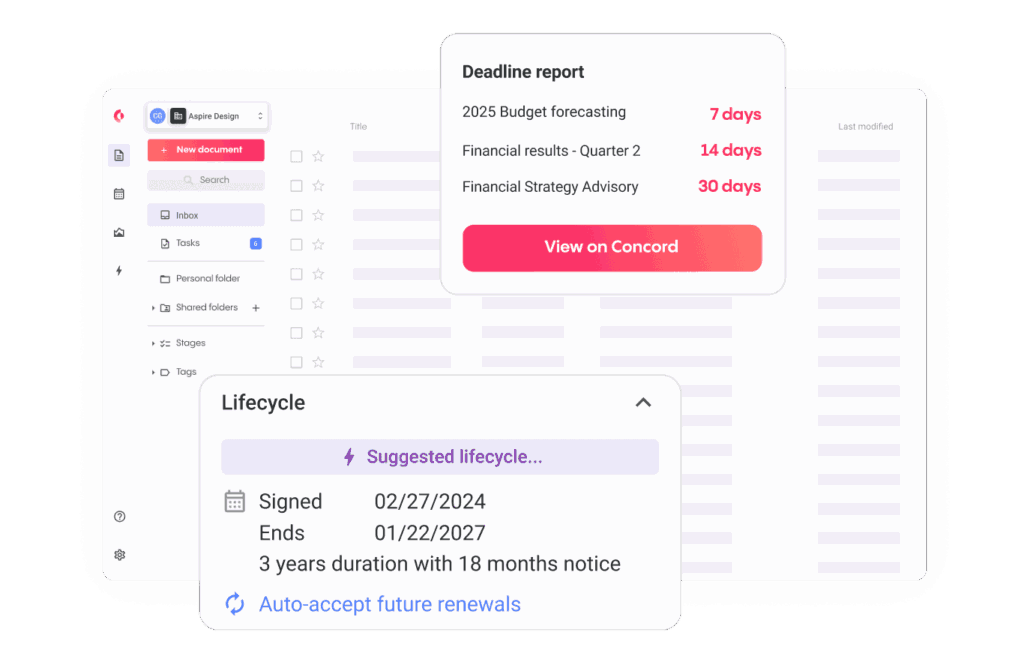
Automated processes
contracts are managed via automated workflows, all in one intuitive platform
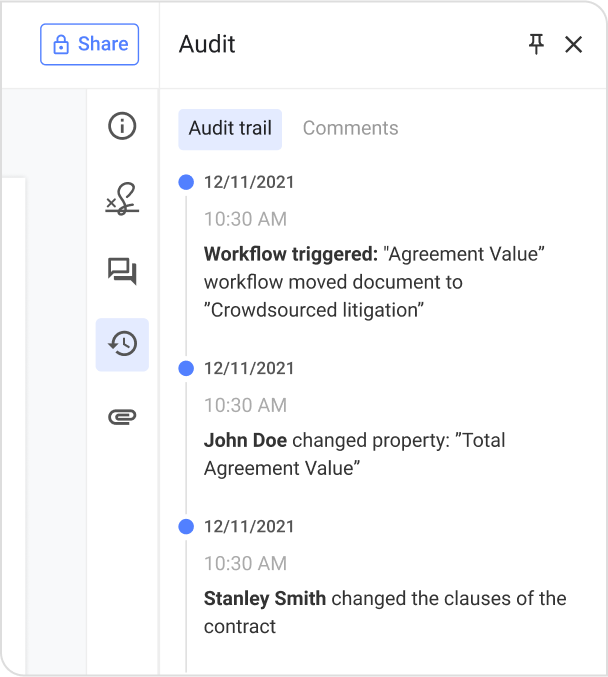
Manual processes
contracts have to be managed manually, across many platforms

Full visibility into contracts
the finance team can quickly search all contracts and get email updates

Limited visibility into contracts
the finance team lacks insight into contract amounts and other key terms

AI-powered data extraction
Agreement Intelligence extracts all contract terms automatically
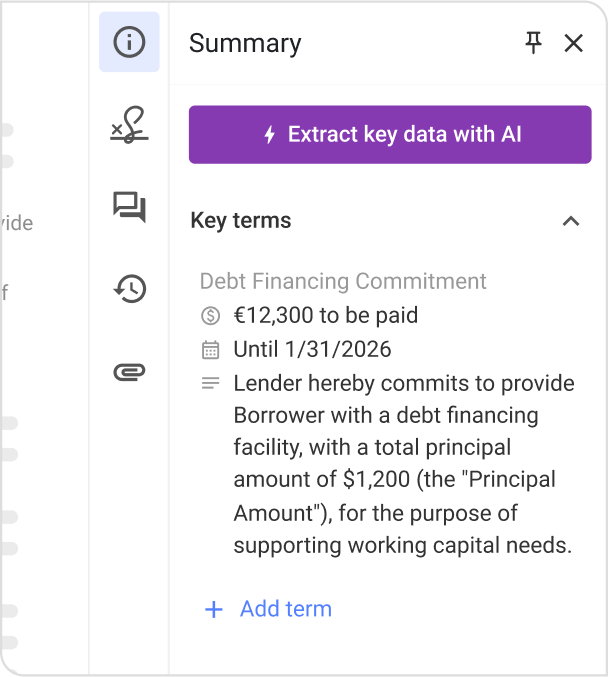
Time-consuming data collection
forecast data has to be entered by hand, requiring hours of labor

Get deep visibility into all the agreements you sign
Concord extracts deadlines, dollar amounts, and other key terms from MS Word docs, Google Docs, and PDFs — plus contracts signed in PandaDoc, DocuSign, Icertis, and more.
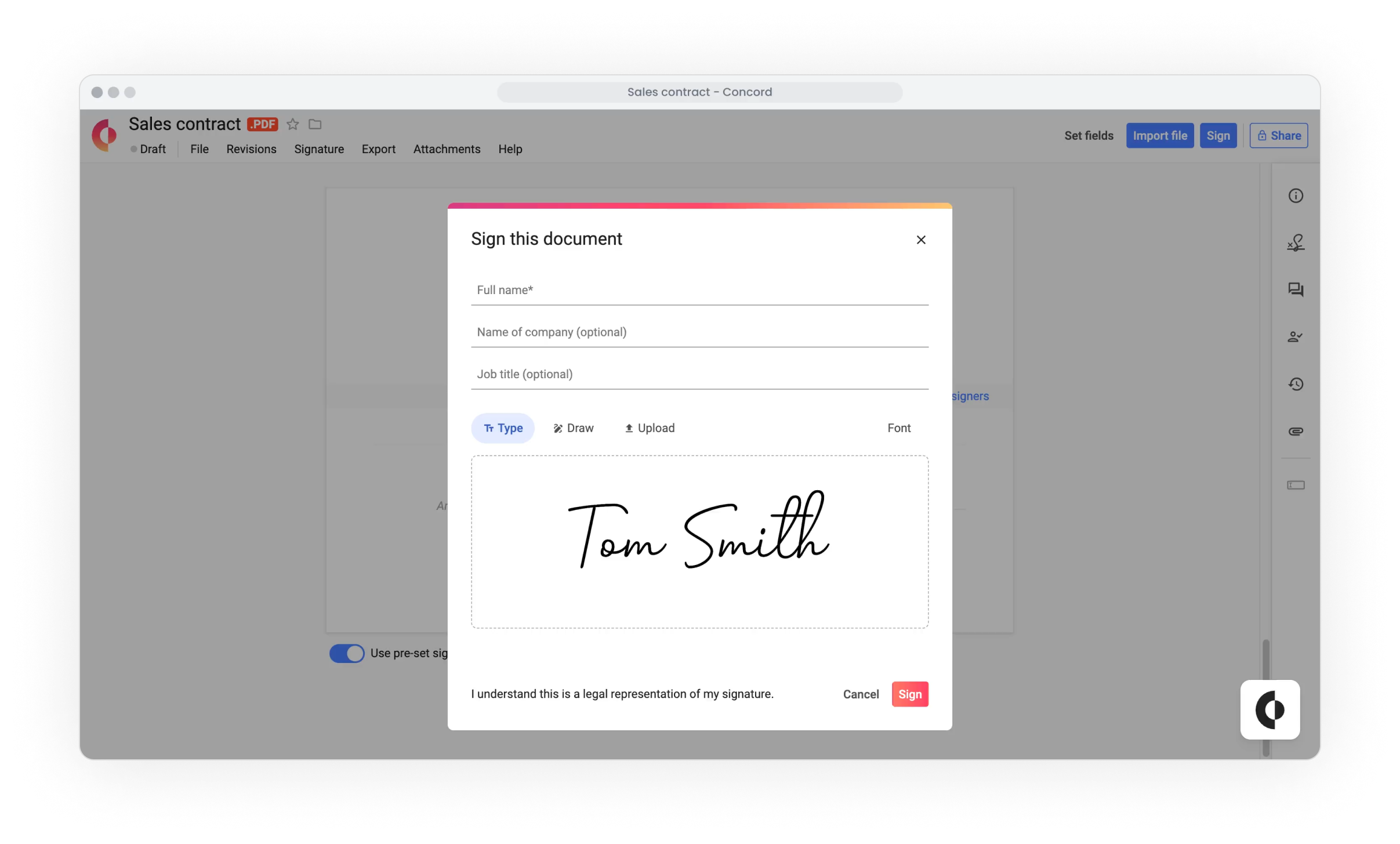

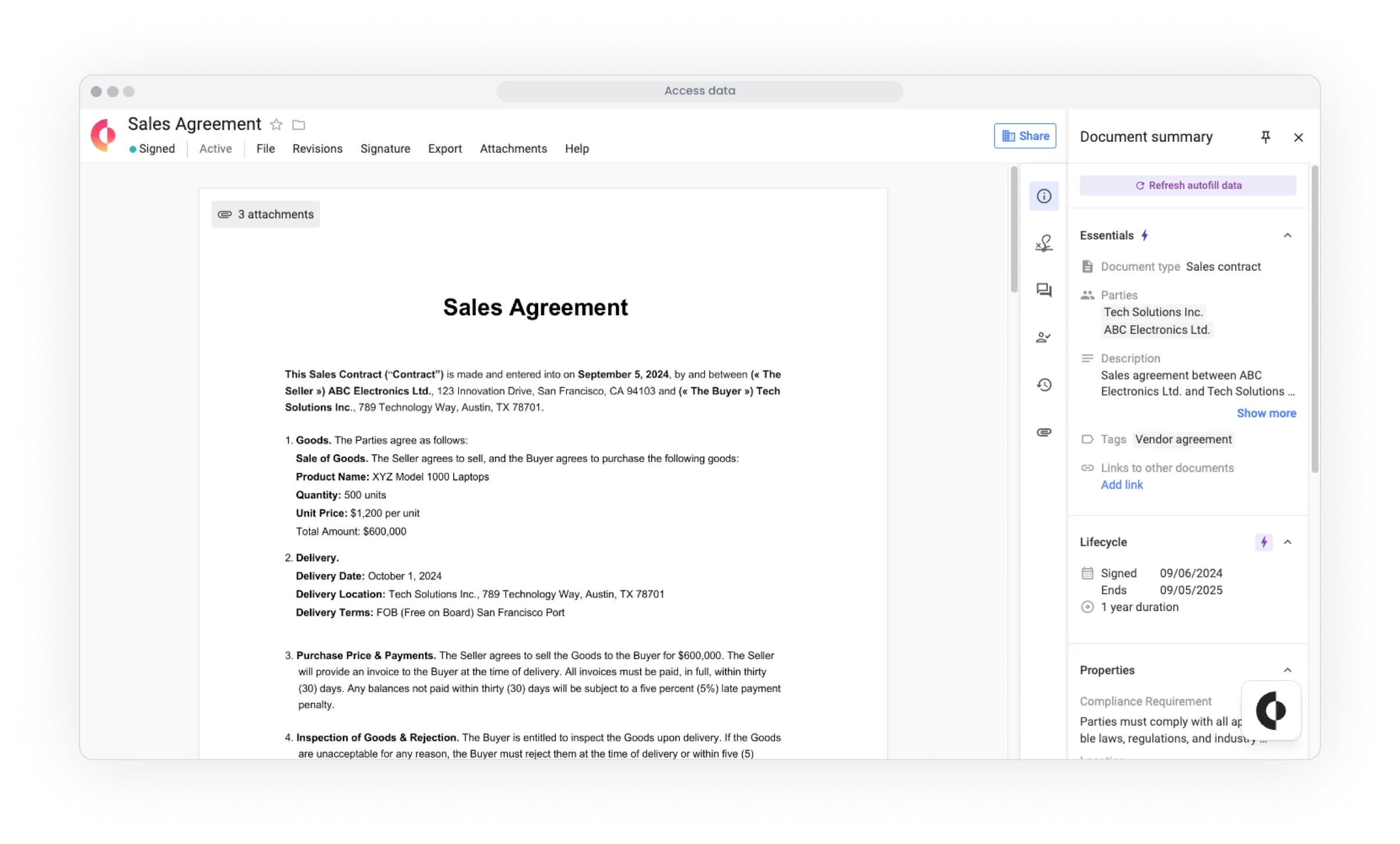


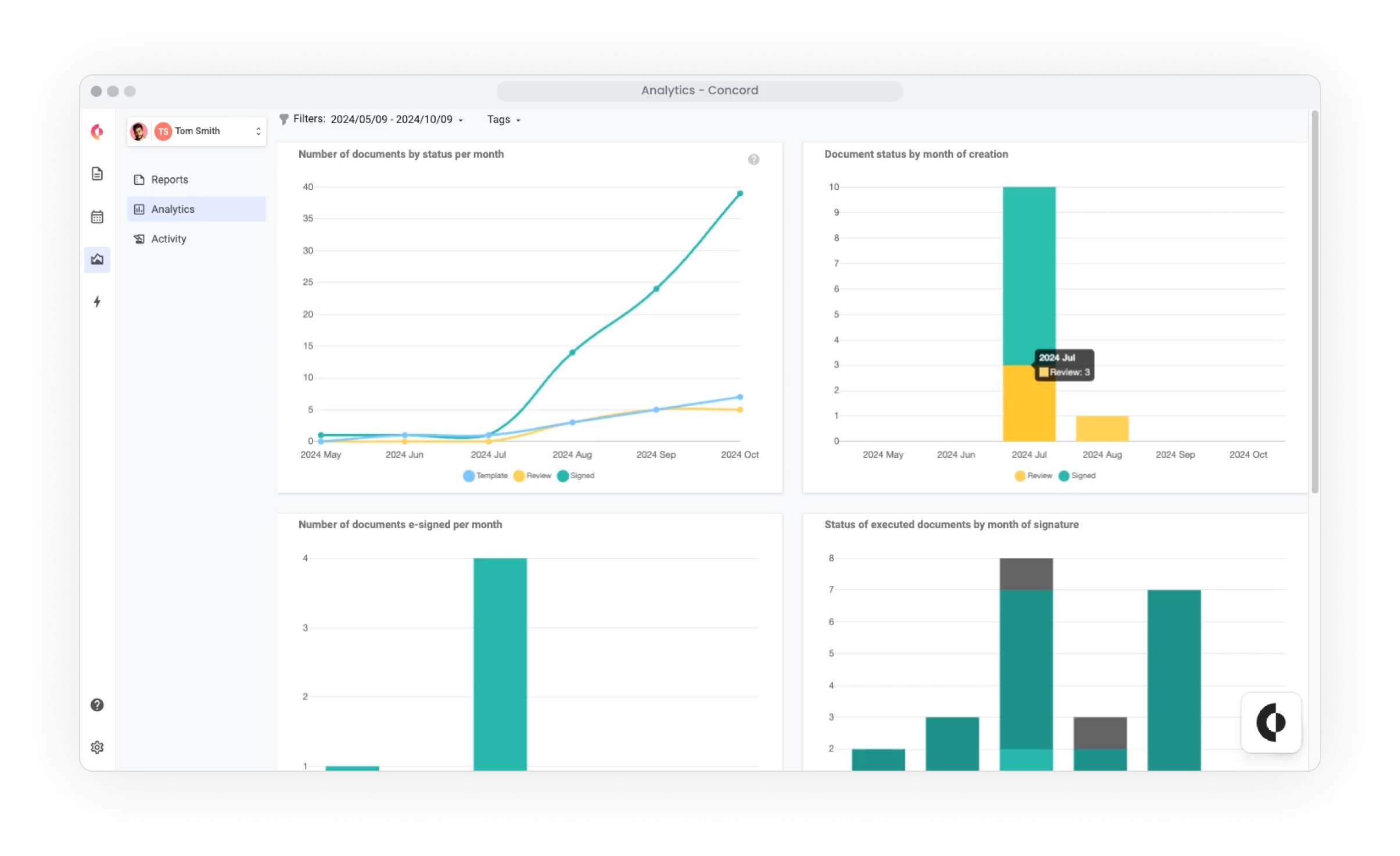
One place for all your contracts
Unlimited storage
Store every contract, securely, without worrying about limits
Custom permissions
Control who accesses each document with custom permission settings
Smart Search
Find any contract instantly with powerful search and filtering tools
Real-Time Collaboration
Work together seamlessly with team members, regardless of location or department
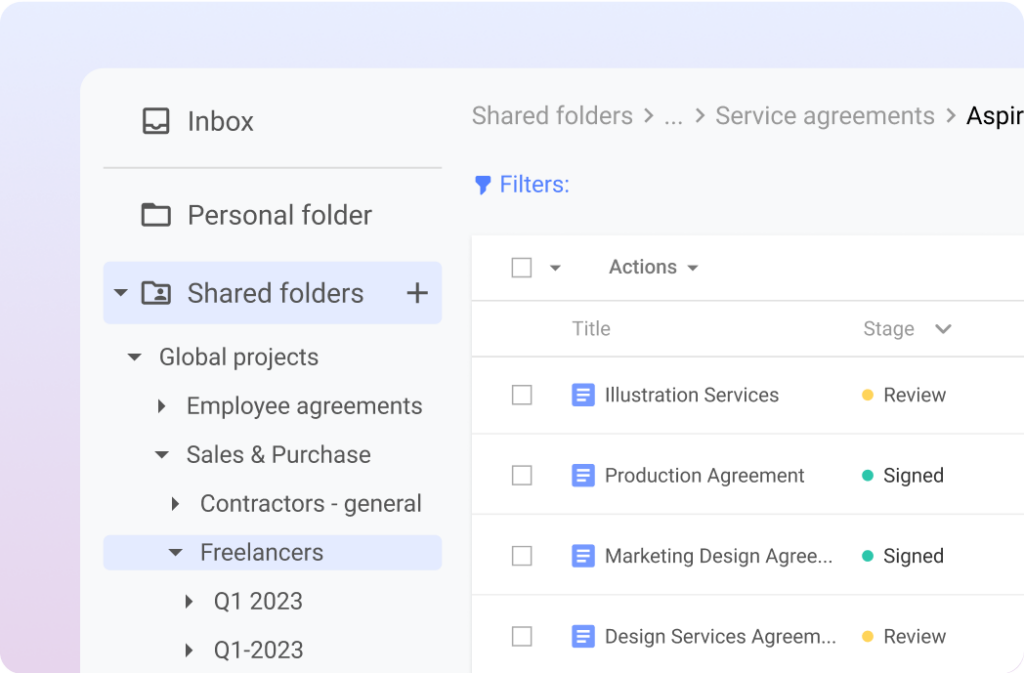


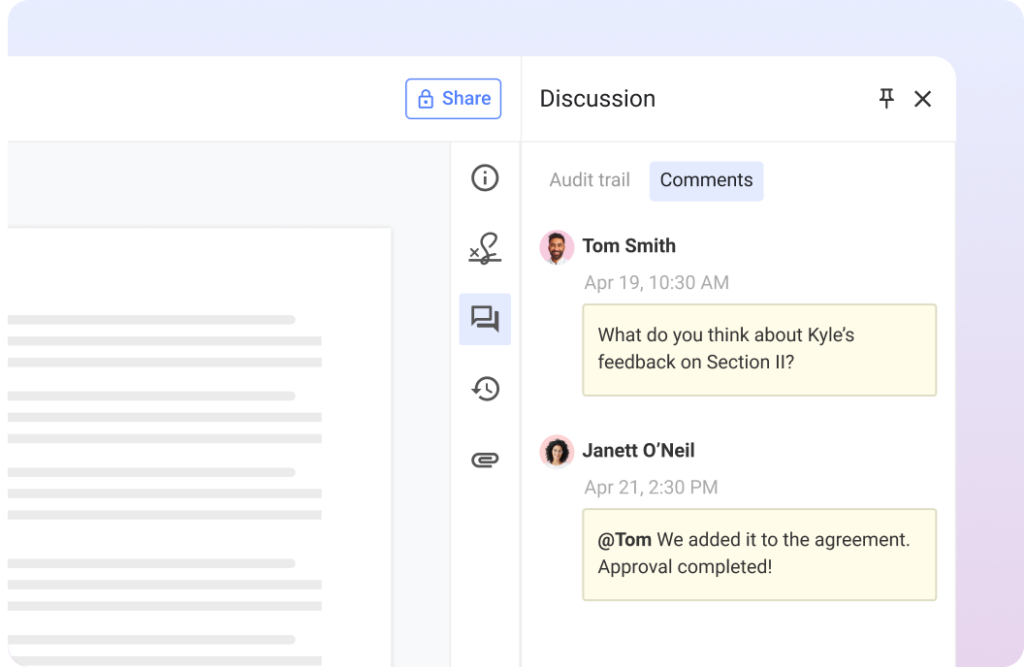
Automate the contract lifecycle with contract management software
Unlimited Approval Workflows
Set up unlimited approval workflows for every type of contract
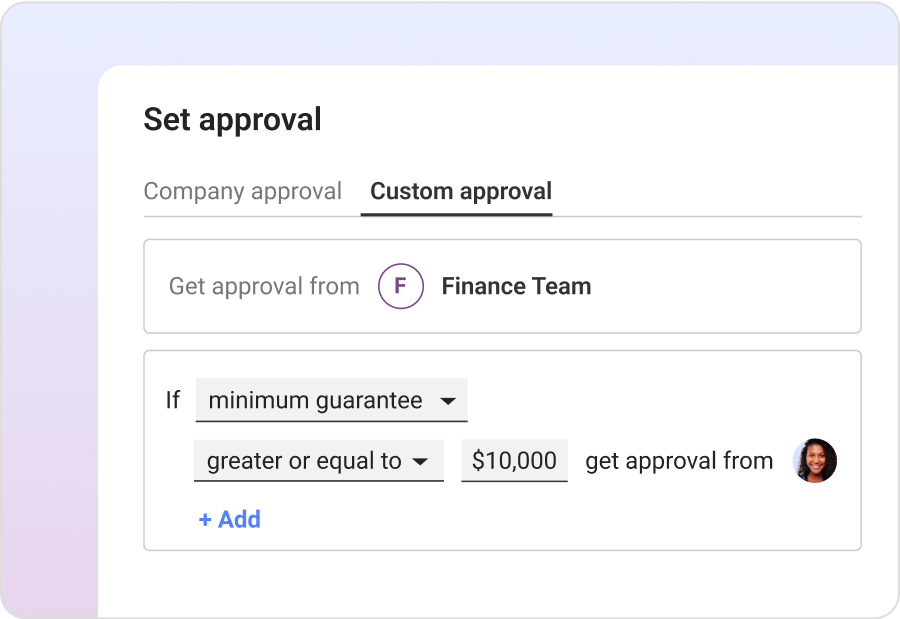
Deadline Reminder Notifications
Never miss another renewal date or approval with smart alerts

The highest level of security for your contracts
Enterprise-grade Security
Concord implements enterprise-grade measures, including SOC 2 Type II certification, GDPR compliance, and a Star Level One rating from the Cloud Security Alliance.
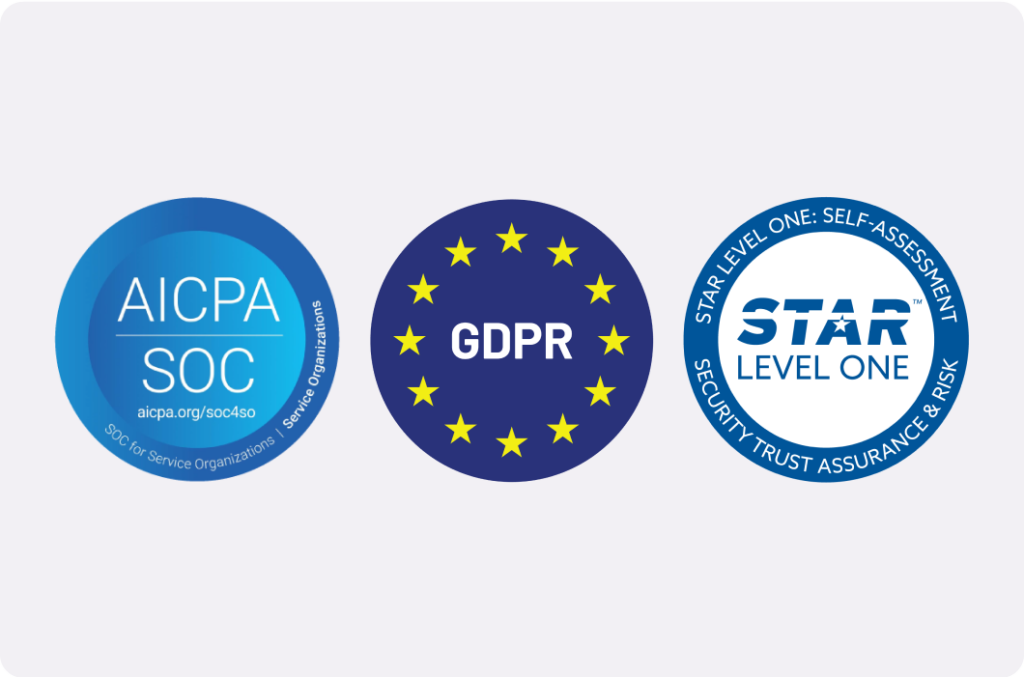
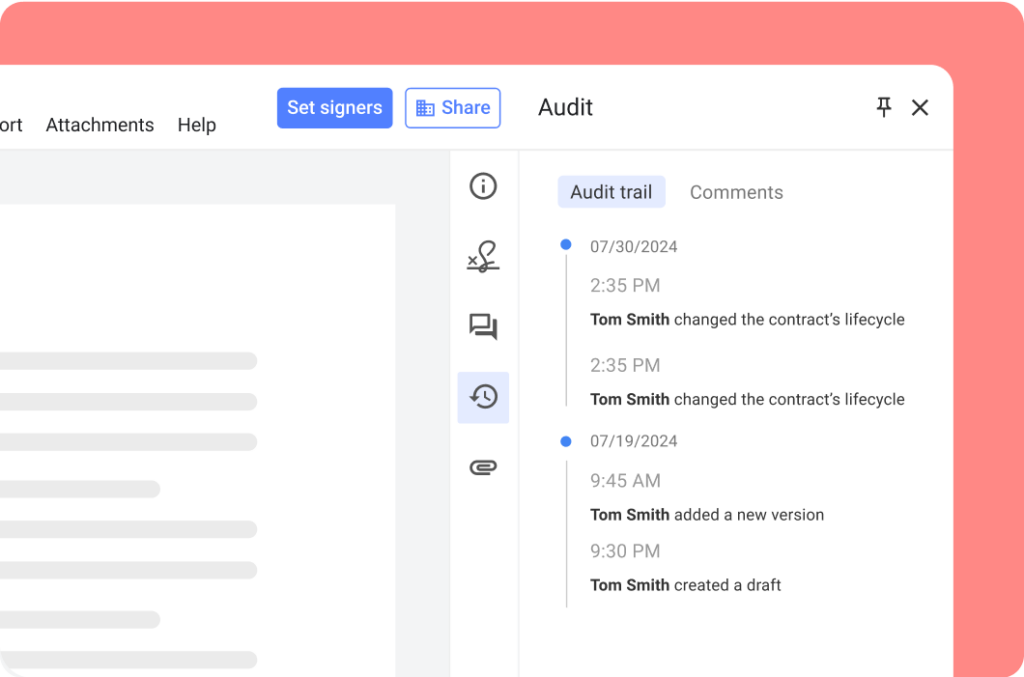
Audit Trail
Track every interaction with contracts for complete
transparency and accountability
Contract management software that easily connects to your existing stack
CRM integration
Create contracts that auto-fill with data from your CRM deals – then share, negotiate, and sign them in
Concord
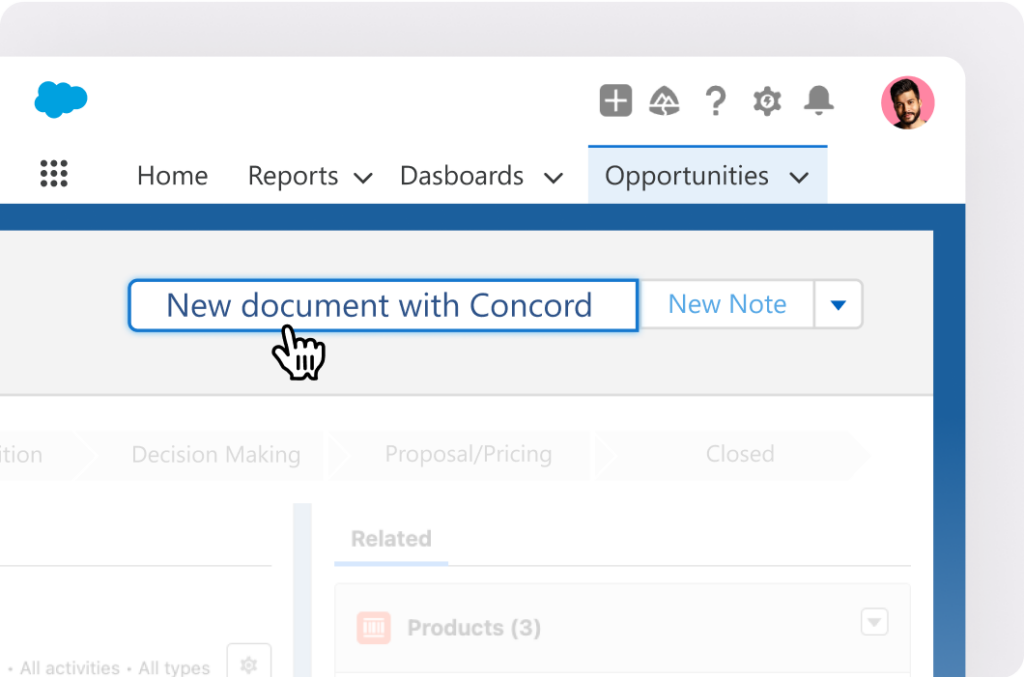
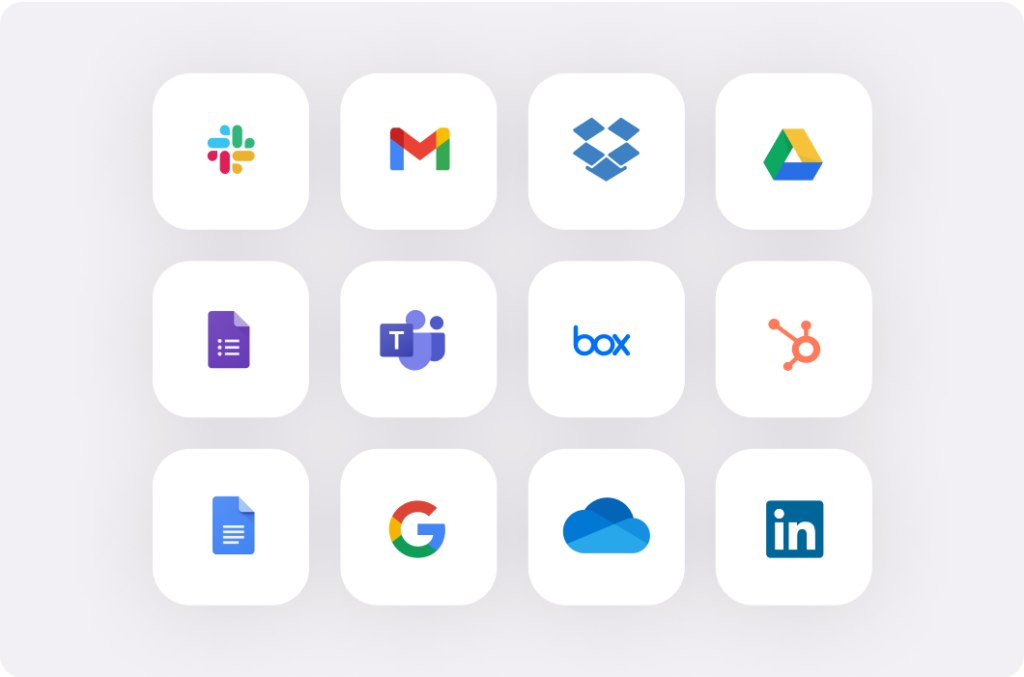
Zapier
Connect with over 5,000 apps to automate workflows across platforms
Thousands of labor hours saved for teams around the globe
“Concord knows exactly what data I want, before I even ask for it. It thinks for me.”

Ramola Khushlani
Contract Manager at Workspend
“The velocity of our organization has improved dramatically since we’ve adopted Concord.”

Peter Koutromanos
CEO at Avior Capital
-20%
Less time spent searching for contract terms every day







